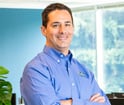If you're coming in late to the story, check out the first two posts:
My A/C Units are Exactly Like Sage 500
My Old A/C Units Have to Go (and so should your Sage 500 solution)
We finally did it! This week, in the midst of a nationwide heat wave, we installed our new a/c units. The fact that the installation coincided with the heat wave is purely accidental and coincidental - we had arrived at this date based on our mutual availability with the HVAC supplier weeks ahead of time. As I sit here enjoying cooler temps indoors, here are three lessons learned during the process...
1) Appreciate the years of service.
We are thankful that our a/c units lasted more than 20 years. With routine maintenance and care, they performed admirably, providing comfort and relief from the heat for many summers. Unfortunately, they aren't built to last forever, and environmental non-compliance added to the decline.
Sage 500 ERP was developed and market-ready in 1998 and sold through 2014. While Sage 500 has been off the market for the past 10 years, many of our clients have been using the solution well beyond suggested industry best practices of 7-10 years. Chances are, Sage 500 ERP delivered ROI to your organization for more years than initially budgeted. Like my a/c units however, Sage 500 has reached the end of its useful life.
2) Plan ahead and be proactive.
Our a/c units started showing signs of distress two summers ago. Together with our HVAC expert, we were able to devise a plan and budget to replace them, on our mutual timelines. We didn't wait for the units to stop functioning and we carefully coordinated the installation when it accommodated our schedules and the HVAC availability. Had we waited for the units to breakdown before replacing them, we could have been stuck in a very hot house in the middle of a heatwave.

You can't plan for a disaster but you can mitigate risk and damage. If you're operating an unsupported version of Sage 500 ERP or your OS/SQL database is unsupported, your company is at greater risk for hardware/infrastructure failure or a cyber attack. Start planning while you can; invest in methodical documentation of your current state along with team agreement on future objectives. Waiting to begin this plan creates unnecessary urgency on the project timeline, budget, and success milestones.
3) Reimagine what's possible.
When considering our new a/c units, we found that characteristics like efficiency, noise levels, manufacturer, and customer reviews were much more important to us now than they were 20 years ago. While replacing the outdoor units, we also considered the landscaping in the immediate areas; replacing overgrown and obstructive hedges with perennial tiger lilies that will not impede air flow through the units. The tiger lilies look better, too!
Migrating to a modern ERP presents the perfect opportunity to rethink your current workflows. Learn about your new solution's updated features and functions, evaluate how they could improve your business and update your existing processes to run more efficiently. A dedicated partner can help you apply industry best practices learned from other customer success stories and challenge the status quo.
With each new post about my a/c units, I was surprised by how many aspects of our journey paralleled the strategic approach needed for a successful Sage 500 migration. The key takeaways from this experience—planning proactively for changes and reimagining potential improvements—are the same recommendations we make to our migration clients. Whether we like it or not, Sage 500 is an aging tool that will need to be replaced. Ignoring that problem isn't going to make it go away, but it will create a crisis situation when a fatal vulnerability inevitably arises. If you haven't started planning for your ERP migration, do it now. Being prepared, embracing change, and seeking improvement are principles that help ensure success on any project, whether your goal is a temperature-controlled home or a seamless software migration.
Want to get moving on your plan but don't know where to start? Read our "Life After Sage 500" series.



